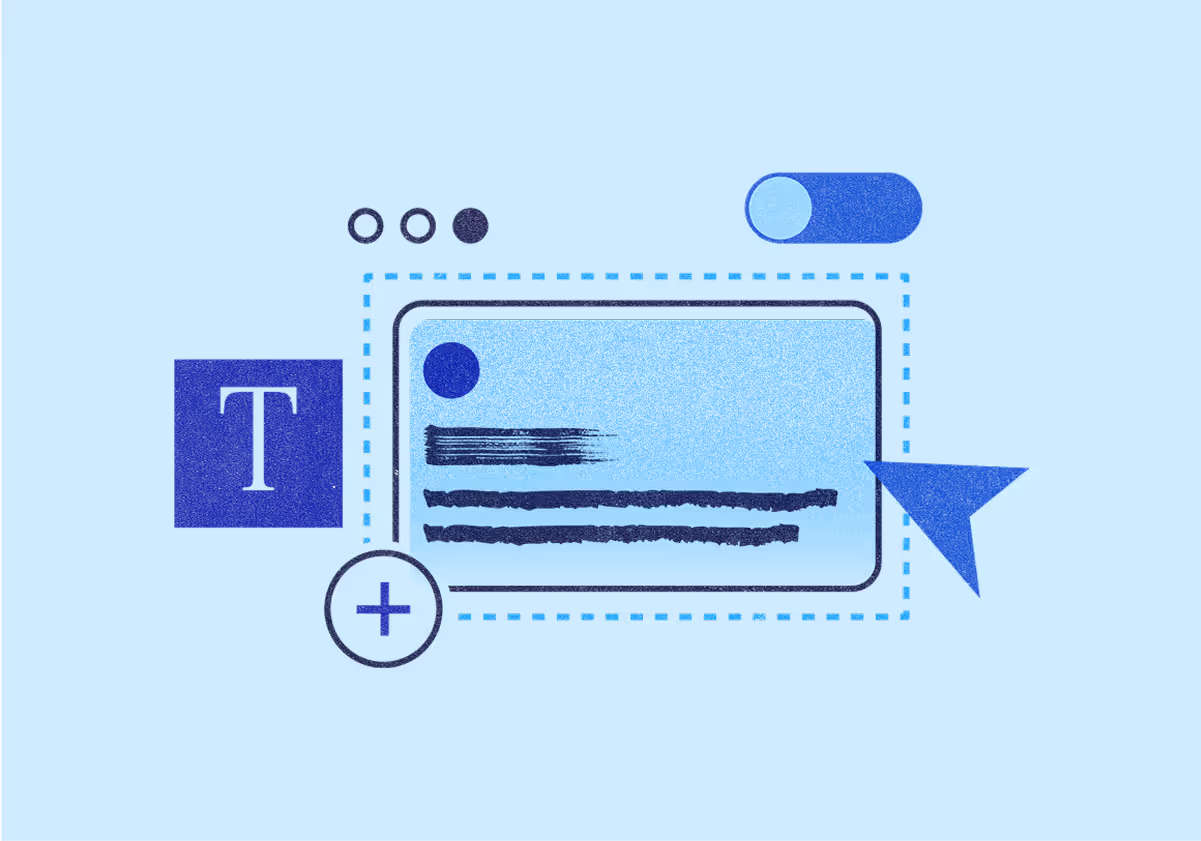Jasper Marketing
November 14, 2024
Ultimate Guide To Marketing For Retail
AI is meaningfully reshaping retail, from more efficient marketing campaigns to inventory prediction and beyond.

Statista projects that nearly a quarter of all retail sales will happen online by 2027. This doesn't mean physical stores are becoming obsolete—but they're evolving into something more dynamic.
Successful retail marketing now requires a delicate balance between digital innovation, AI-powered insights, and high-touch customer service. Whether you're overseeing a small boutique or managing multiple locations, retailers know it’s critical to deliver personalized experiences both online and in-store.
AI is meaningfully reshaping retail, from more efficient marketing campaigns to inventory prediction, helping retailers understand and serve their customers like never before. The key is leveraging technology while maintaining a human touch to meet your customers wherever they are, from their Instagram feeds, to their inboxes, to your store aisles.
Marketing for Retail: Leveraging AI
Retailers face some tough challenges, including evolving consumer behaviors, unprecedented supply chain complexities, and growing technology demands.
But that's where AI steps in. It's not just about automating tasks—AI also gives retailers a sharper lens on their businesses. By analyzing patterns in everything from sales data to weather forecasts, AI helps retailers make smarter decisions about what to stock, when to stock it, and how to get it to customers efficiently.
The numbers tell an interesting story: according to Analytics Insight, 40% of retail companies already use AI automation in their operations. But it’s just the beginning. By 2025, about 80% of retail executives expect their companies to use AI technologies to stay competitive.
What makes AI particularly valuable is its ability to spot trends and patterns that humans might miss. Whether it's predicting the next big seller or adjusting supply chains before problems arise, AI is helping retailers transform the way they do business.

AI in Action: The Retail Marketing Playbook
Think of AI as retail's newest superstar employee—one that never sleeps, spots trends before they take off, and knows exactly what your customers want (sometimes before they do.) From mom-and-pop shops to retail giants, businesses use AI to work smarter, not harder. Let's dive into how AI is reshaping the retail game. Here are six use cases and examples that retailers can focus on for optimal results.
Personalization
Think about the last time you got a spot-on product recommendation. That's personalization at work, creating those "they really get me" moments that turn casual browsers into loyal customers.
About 80% of consumers are likelier to purchase from brands that deliver personalized experiences. Even more striking, 71% express frustration when their shopping experience feels impersonal. Personalization is not just about boosting sales—it can reduce acquisition costs by up to 50%.

So how do you use it? Start by feeding your AI tool with customer data like past purchases, browsing patterns, and demographics. These platforms can analyze patterns to identify key behavior triggers and preference clusters. You can then use these insights to create targeted messaging, product recommendations, and customer journeys that feel tailor-made for each segment.
Once you've identified your different customer segments, Jasper can help you craft tailored messaging that speaks directly to each group. For example, you can use Jasper to:
- Create variations of product descriptions that resonate with different buyer personas. See how Adidas used AI for testing on its product pages.
- Generate personalized email templates that match each segment's tone and pain points. Check out these awesome email template ideas.
- Adapt your marketing copy to reflect specific demographic preferences and language styles
- Scale content creation while maintaining a consistent brand voice across different audience segments.

Inventory management
Managing inventory has always been one of retail's biggest puzzles. Sometimes, there’s too much stock gathering dust, or worse, customers run out of popular items just when they want them. It's like trying to predict the weather six months in advance.
But AI is changing the game. By analyzing everything from past sales to social media trends, AI is helping businesses stock just what they need, when they need it. Sarah Chen, Digital Marketing Head at RetailPro, puts it perfectly: "AI has transformed how we manage stock. Last holiday season, our AI predicted a surge in sustainable packaging products weeks before the trend hit. We were ready when other stores were scrambling."
Many AI tools can help with quick inventory checks. Example prompt: "Show me all SKUs below 20% inventory level and their reorder status.” You can also set up an AI workflow to monitor stock levels and automatically trigger reorder points.
Demand forecasting
Markets change at lightning speed, consumer preferences shift overnight, and let's not forget those pesky supply chain surprises we've all come to know.
Here’s where AI comes to the rescue. You can use an AI tool to crunch through mountains of historical sales data, keep tabs on market conditions, and even pick up on emerging trends, things that might take humans weeks to analyze. AI can track seasonal patterns, spot demand signals from social media, and account for promotional impacts. It can also spot patterns we might miss and adjust predictions in real-time.
Here are a few example demand generation forecasting prompts:
- Analyze our last 12 months of sales data for [product category] and predict demand patterns for the next quarter
- Identify peak selling periods for [product] over the last three years and map out expected seasonal spikes for the next six months
- Calculate average order value trends and forecast expected changes based on current economic conditions
- Compare growth rates across regions and identify emerging high-potential markets

Route planning
Route planning might sound like pushing pins on a map, but it can significantly increase retailers' profits. Smart route planning isn't just about getting from A to B anymore; it's about getting there in the most profitable way possible. Every extra mile driven means more fuel burned, more driver hours paid, and potentially late deliveries that frustrate customers.
AI is like a super-smart logistics manager. It can crunch through countless route combinations in seconds, considering factors like traffic patterns, delivery windows, vehicle capacity, and even driver breaks. That’s not all. These routes can be adjusted in real time when unexpected issues pop up.
UPS is a perfect example of success with AI route planning. Their ORION (On-Road Integrated Optimization and Navigation) system saves them around 100 million miles; that's about $400 million in savings. They eliminated countless left turns from their routes after AI analysis showed these turns waste time and fuel while increasing accident risks.

Price optimization
When it comes to pricing, retailers can't just "set it and forget it." From seasonal shifts to supply chain hiccups, businesses constantly juggle multiple factors to stay competitive while keeping their margins healthy.
Let’s say you have an enterprise software company selling cloud solutions. The AI system might notice that customers typically buy more licenses at quarter-end, and competitors often discount heavily during these periods. The AI could recommend targeted promotions that help you maintain market share without unnecessarily slashing prices across the board.
As Mark Stouse, CEO of Proof Analytics, puts it: "Dynamic pricing isn't just about charging what the market will bear – it's about finding that sweet spot where value perception meets business sustainability."

Assortment planning
Customers' preferences are changing faster than ever, and the old "gut feel" approach to assortment planning isn't cutting it anymore. AI can spot hidden patterns in your customer data that you might never notice – like how weather patterns affect certain purchase behaviors or unexpected product combinations that customers frequently buy together.
Gartner predicts that by 2025, every major multichannel fashion retailer worldwide will use AI for assortment decisions. That's not just a trend; it's becoming necessary to stay competitive.
Want to start using AI for assortment planning? Upload your customer purchase history data to an AI platform, and let it analyze patterns specific to your business. The insights might surprise you – like finding out your Tuesday afternoon shoppers have completely different preferences than your weekend crowd.
Acing Retail Marketing with AI
The retail marketing game is changing fast. We're shifting toward hyper-personalization, where every customer interaction feels tailor-made. Think of walking into a store and getting real-time offers on your phone based on your previous purchases and current browsing patterns…it’s just the beginning of what AI has to offer in the context of retail marketing.
AI tools make this personalization possible, and you don't need a huge budget to get started. Tools like Jasper can help write engaging product descriptions and social media posts, as well as with image editing and generation. For customer service, AI chatbots can handle basic queries 24/7, freeing up your team for more complex interactions.
As you get comfortable, you can explore more advanced features like predictive analytics to forecast trends and inventory needs. Watch this webinar to learn more about how AI can be used to improve your retail marketing efforts.
More of the latest & greatest

Gemini 3 Pro in 24 Hours: Inside Jasper’s LLM-Optimized Architecture
How does Jasper validate new AI models like Gemini 3 Pro in under 24 hours? Inside our rigorous 3-step testing process for enterprise marketing.
December 4, 2025
|
Nick Hough

3 Predictions for AI in Marketing in 2026
In 2026, AI will rewire teams, streamline tooling, and turn content into a competitive engine.
December 2, 2025
|
Loreal Lynch
.png)
Highlights from Jasper Assembly: Scaling Content with Confidence
Discover key insights from Jasper Assembly 2025. Leaders from Sanofi, NetApp, U.S. Bank, and BCG shared AI marketing strategies for scaling content and driving impact.
November 19, 2025
|
Loreal Lynch













